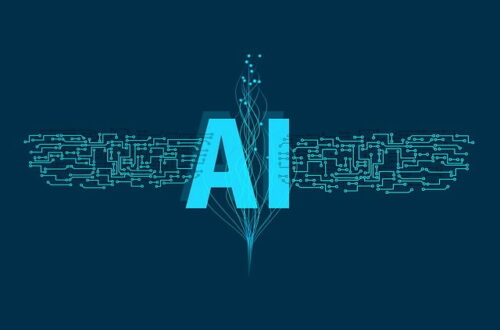The internet is a vast and complex world that offers a multitude of opportunities and experiences.
Diving into the different levels of the internet can feel like a journey into the dark unknown, uncovering hidden realms, and exploring the diverse facets of what the online world has to offer.
From the surface level of safe and comfortable everyday browsing, to the depths of illegal activities and mind boggling academic research, there are layers upon layers waiting to be discovered if you know where and how to look.
Whether you’re a beginner or a seasoned internet user, understanding the different levels of the internet can provide valuable insights into the fascinating realms that lie beneath the digital surface.
So, fasten your metaphorical seat belt and get ready for a ride into the endless unknowns of the internet.
Level By Level: Internet Safety And Security
Diving into the Internet is like exploring the vast ocean, with its various levels offering different depths and experiences.
Just like diving into the deep sea, navigating through the levels of the Internet requires knowledge and precautions.

- The surface web is comparable to the sunlit ocean surface, where most online activities take place. Websites and content accessible through search engines are part of the surface web. From researching academic journals to making online purchases, this level is where most users spend their time.
- The deep web is like diving further into the ocean, exploring areas not easily accessible to the general public. It consists of web pages that are not indexed by search engines. Personal email accounts, online banking, membership portals, and specialised databases fall into this category. While these areas require authentication, they are not necessarily sinister or illegal.
- The dark web, however, is the deepest and most mysterious level. Similar to diving into the darkest depths of the ocean, it harbours illegal activities and hidden services. Accessible through anonymised browsers and specific URLs, the dark web is notorious for criminal activities, illicit goods, and services. It’s important to approach this level with caution if you go anywhere near it at all, as it poses additional risks to personal privacy and security.
Just like diving, exploring the different levels of the Internet offers unique experiences. However, it’s crucial to be aware of the inherent risks and exercise caution while diving deeper into the depths of the online world.
Also Read: Exploring the Pros and Cons of Social Media on Mental Health
How To Access Levels Of The Internet
Now that we know what is meant by the surface, deep and dark web, it’s time to learn how to access these different levels of the internet.
The surface web, also known as the open web, is the part of the internet that can be accessed and indexed by standard search engines like Google, Yahoo and Bing. The surface web is accessible through traditional web browsers and does not require any specialised software or permissions to view.

It is designed to be easily discoverable and user-friendly. Examples of popular websites that are part of the surface web include social media platforms like Facebook, Twitter, and Instagram, news websites like CNN and BBC, online shopping sites like Amazon and eBay, search engines like Google and Bing, and educational resources like Wikipedia and Khan Academy.
The deep web is a significant part of the internet that is not accessible through traditional search engines. It includes things like academic databases, private networks, online banking platforms, and other password-protected or membership-based websites. The deep web requires specific software or permissions to access. Characteristics of the deep web include a higher level of user privacy and security, as well as a greater emphasis on user authentication and encryption.
The dark web is a subset of the deep web that operates on encrypted networks and intentionally remains hidden and anonymous. It serves as a platform for various activities, including both legal and illegal ones. The main characteristic of the dark web is its focus on anonymity, providing users with tools to hide their identities and activities.
To ensure anonymity, users on the dark web rely on anonymisation software known as Tor (The Onion Router), which routes their internet traffic through a network of encrypted tunnels, making it difficult to trace back to the source. Cryptocurrencies like Bitcoin are often used for transactions to further maintain anonymity. Apart from illegal activities, the dark web also hosts encrypted communication platforms, allowing users to securely exchange information and discuss sensitive topics without fear of government monitoring or censorship.
Also Read: Discover The 5 Best Free AI Software Tools Available Today
How To Access The Dark Web
Accessing the dark web involves using different methods to ensure safe and anonymous browsing. One popular method is through the use of anonymising browsers, which help protect user identity and maintain privacy online. These browsers route internet traffic through a network of encrypted tunnels to conceal the user’s location and make it difficult to trace back to the source.
To access the dark web using an anonymizing browser, follow these steps:
1. Download and install a trusted anonymising browser like Tor.
2. Launch the anonymising browser and connect to the internet.
3. Disable any plugins or extensions that could compromise your anonymity.
4. Type in the “.onion” URL of a dark web website or search for directories and forums that list dark web links.
5. Access the desired website and browse anonymously.
An alternative way to securely access the dark web is by using virtual private networks (VPNs). A VPN establishes a secure connection between your device and the internet, providing privacy by masking your IP address and encrypting your internet traffic.
Also Read: Is Crypto Mining Dead? Unveiling The Current State Of Cryptocurrency Mining

To access the dark web using a VPN, follow these steps:
1. Subscribe to a reputable VPN service and download their client software.
2. Install and launch the VPN client, then connect to a server location of your choice.
3. Once connected, your internet traffic is encrypted and routed through the VPN server.
4. Open your preferred web browser and access the dark web using a “.onion” URL or dark web directories.
Also Read: PS5 Internet Browser: What Is It & How To Access It?
Is It Illegal To Go On The Dark Web?
While browsing the dark web may not be inherently illegal, it is important to understand the potential legal implications and risks involved. The dark web is infamous for facilitating illegal activities such as drug trafficking, weapons sales, hacking, and more. Engaging in any of these activities can lead to severe legal consequences.
The legality of activities on dark web sites depends on the jurisdiction one resides in, as laws vary across countries. The sale or purchase of controlled substances, counterfeit items, stolen data, or engaging in hacking activities is widely considered illegal worldwide. Additionally, participating in illegal forums, discussing criminal activities, or hiring hitmen are all unlawful actions that can result in legal repercussions.
To protect yourself, it is advisable to refrain from accessing the dark web and steer clear of any involvement in illegal activities. Staying aware and protected can help you stay positive as you surf the world wide web. Always prioritise legal and ethical online practices to avoid potential legal troubles.
Types Of Threats On The Dark Web
The dark web is a mysterious and hidden part of the internet known for harbouring illicit activities and dangerous individuals.
From cybercrime to personal safety concerns, the dark web presents a variety of dangers that users must be aware of.
Malicious software, commonly known as malware, is a prevalent threat on the dark web. This underground network harbours various types of malware, each with its unique characteristics and risks to unsuspecting users.
- Ransomware: This type of malware encrypts a user’s files and demands a ransom in exchange for the decryption key. Risks include permanent loss of data and financial loss if the victim pays the ransom.
- Botnets: A botnet is a network of infected computers controlled remotely by a cybercriminal. These compromised devices can be used for various malicious activities, such as launching DDoS attacks or distributing spam emails.
- Spyware: Spyware is designed to secretly gather information about a user’s activities without their consent. It can lead to identity theft or financial loss.
- Trojans: Trojans disguise themselves as legitimate software but contain malicious code. They can grant unauthorized access to cybercriminals, allowing them to control the infected device, steal sensitive information, or carry out other damaging actions.
- Keyloggers: Keyloggers record keystrokes on a user’s device, capturing sensitive information like login credentials, credit card details, or personal messages.
- Worms: Worms are self-replicating malware that can spread across networks without user interaction. They can cause system slowdowns, network congestion, or even shut down entire systems, leading to data loss or disruption of services.
Users must be cautious of the risks associated with these types of malicious software and take appropriate measures, such as using reputable antivirus software, regularly updating their devices, and avoiding suspicious downloads or websites.
Government monitoring on the dark web is a crucial aspect of law enforcement agencies’ efforts to combat criminal activities conducted in the hidden corners of the internet. The dark web, which refers to the anonymous, encrypted part of the internet, is home to various illegal activities, including the sale of drugs, weapons, stolen data, and even human trafficking.
Government monitoring on the dark web is essential for combating illegal activities. Through the use of surveillance tactics and advanced technologies, law enforcement agencies can track and monitor activities, gather evidence, and ultimately bring criminals to justice.
Also Read: Is 300 Mbps Good For Gaming? Evaluating Internet Speed For Gamers
One common type of scam is phishing, where cybercriminals attempt to acquire sensitive information such as usernames, passwords, and credit card details by impersonating legitimate websites or organisations. Another scam frequently encountered on the dark web is money laundering. Identity theft is another major scam on the dark web, with criminals using stolen personal information to commit fraudulent activities. Individuals must be aware of the risks and exercise caution when navigating the dark web to protect themselves from falling victim to these scams.
How Deep Do You Want To Go?
The majority of people will be happy simply browsing websites via Google, doing a bit of online shopping, sending emails and checking social media etc.
Fewer people will be interested in the heavy academic stuff but it’s a useful resource for those who want it.
Then there is the dark web.
Accessing the dark web can be intriguing, so you can understand why people may want to investigate it, but it is not without risks.
Understanding the different levels of the internet is crucial to navigating this hidden part safely, and by following the tips provided, users can ensure a safer experience while exploring the dark web if they are determined to open that particular door.
It is essential to remember the potential risks involved in accessing the dark web though; by using caution and responsible internet usage, individuals can protect their personal information from potential threats and ensure a more secure online experience.




